Kenmare, Monday July 11th
4pm
I’m sitting outside Rookery Lane, on Bridge Street, having a late lunch of their Buddha Bowl salad, which is so good I will return the next day and order the exact same thing. John Daly shows up to join me. His family-run estate agency in Kenmare goes back to 1977. He has seen a lot of changes in the property market since his father Sean established the business back then.
“Selling sites was a big thing in the 70, 80s, and 90s,” he says. “Farmers were selling sites. Half an acre was about £10,000. That was a lot of money for farmers. In the 90s, an acre with a sea view was about £40,000. All that stopped in the early 2000s, with planning regulations. Sites are gone, and now it’s houses that are the thing.”
In the 1970s, Daly reports that a large percentage of their buyers were Dutch, German and British. The area they represent is roughly the Kenmare Bay area, extending to Caherdaniel and the Beara Peninsula.
What are buyers looking for?
Daly laughs. “Everyone wants a house with a sea view for a very limited amount of money.”
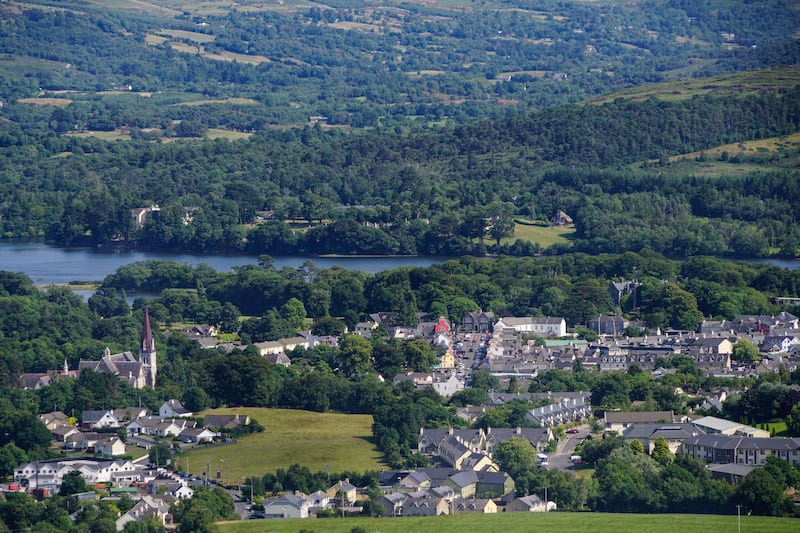
How has the pandemic altered the business? “Pre-Covid there were more properties on the market, but there used to be less demand. Since Covid, there are more people looking, and fewer properties available, but it is still the same amount of sales. The main change is that in the past, we’d have a property on for three or four months before it would sell, and now it is sold in three or four weeks.”
Like everywhere else in the country, there is a housing shortage in Kenmare. There has been no new housing developments built for several years in the town, due to the fact the sewerage system is beyond capacity, and a new waste treatment plant is long overdue.
5pm
Kenmare used to have a ballroom called, poetically, The Silver Slipper. It opened in 1964, on the site of the former Butter Market, and had a maple dance floor. All the showbands of the day played there. It closed in 1985, the maple floor was replaced with concrete, and it became a ‘cash and carry’. Today it’s called the Butter Market again, and is currently an exhibition space. The original rafters and ceiling arches endure, under which so many people in Kenmare and beyond must have danced all those decades ago.
I wander around the Modern Irish Sculpture exhibition, where there are several striking pieces by 33 artists. It’s part of the Kenmare Arts Festival. Participating artists include Dirk Hudson, Michael Foley and Michael Quane. The Butter Market opened as a gallery in June of 2020, and is a definite cultural asset to the town.
[ 36 hours in Clonakilty: ‘Airbnb has a lot to answer for’Opens in new window ]
8pm
I’m staying in one of Kenmare’s newest hotels, the Lansdowne, in the middle of the town. It opened last summer. It’s another enterprise of the hotelier Brennan brothers, John and Francis, who run the town’s Park Hotel, and a number of other places. My bed is kitted out in Francis Brennan’s line for Dunnes Stores, which also appears in the bathroom.
There were 32 pubs when I was growing up. There may have been almost three dozen pubs back then, “but you couldn’t get a cup of tea on a Sunday, and now every second house on the street is a restaurant
The Lansdowne, which has a calm, fresh, understated look, has 28 rooms. My room is lovely, with a bonus comfortable sofa by the window, overlooking the street. It would want to be lovely. My single occupancy rate for this room – without breakfast – is €230 a night.
Tuesday, July 11th
10.30am
On Main Street there is a double-fronted premises with Mill Cove Gallery over one side, and John Brennan Studio on the other. No, it’s not that John Brennan. Not the hotelier.
“I’m the real John Brennan,” says the man in front of me. Together with his husband, John Goode, he owns and runs this gallery, which also showcases some of his work. They were based in West Cork for many years, and moved their gallery here in recent times. “I get a lot of people walking in who see the sign outside and say, I didn’t know hotelier John Brennan was an artist,” he jokes.
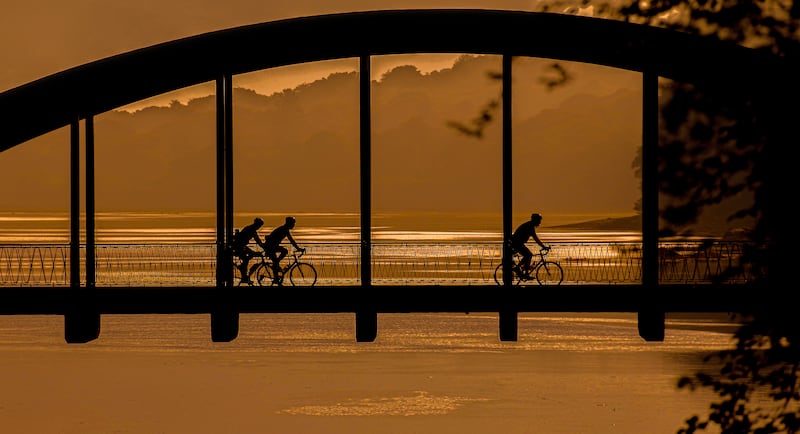
Brennan himself doesn’t like the term “artist”. “There are strange connotations with that word,” he says. “I think artist is a name someone gives you.”
There are plenty of people browsing the paintings and sculptures. One of the marks of any tourist town with a moneyed clientele is the number of art and photography galleries it can support. There are at least four I count: this one, the Purcell, the Skyline, the Norman McCloskey. “My biggest clients are the Irish,” Brennan says, “who buy at about the €500 to €2000 mark.” He tells me Bono bought one of his own paintings, although declines to say how much it went for.
11.30am
I’m wandering around, having a look at some of the shops. There’s one called Begley & Bowie, selling brightly-coloured sweatshirts, which offer a tongue-in-cheek appeal to the Dublin visitors. One hot pink sweatshirt has on it the words, “New York. Paris. Dalkey. London. Milan.” I check the price tag: €90.
At the Engel and Volkers estate agents, there’s a three-bedroomed house with a sea view near Waterville for €495,000.
The thing about Kenmare is that you can leave your office and play two holes in your lunchtime
At O’Donoghue Roddy’s, the shop window is a retail visual carnival. All these things – and many others – are in the front window. Fishing tackle. Slug killer. Garden shears. A magnifying glass. A pack of playing cards. Mousetraps. A hammer. String. Hairdressing scissors. A baptismal candle. The 2022 Kenmare Bay Tides Tables.
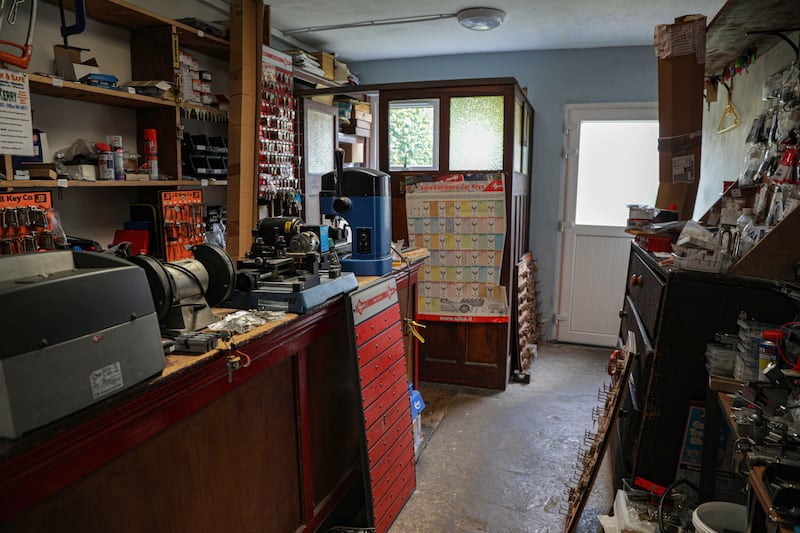
Noon
Unusually for a golf club, the 18-hole one at Kenmare is within walking distance of the town, as it literally adjoins it. It was established in 1903, and I have arranged to meet its press officer, Charlie Vaughan, at the clubhouse there. There are 400 members – “we’d like more,” I’m told – and annual fees are €1,250. Their old clubhouse burned down in June 2020, due to an electrical fault, and the lovely new one is due to be formally opened on Sunday, August 7th.
The good people of Kenmare Golf Club are so anxious to meet me that five of their members show up to a meeting at the new clubhouse where I was expecting just the one person. There’s father and daughter James and Clara Brosnan. He is a former president of the club, and she is the current ladies’ captain. Tommy Crowley is the current club president. Sean Finn is the men’s captain.
[ 36 hours on Rathlin Island: ‘I like the life here. There is no crime’Opens in new window ]
“A lot of golf clubs are elitist, but we are not,” James Brosnan declares.
“And women are allowed in,” Clara Brosnan says. “You don’t have to be a member to use the clubhouse either.”
“The thing about Kenmare is that you can leave your office and play two holes in your lunchtime,” Vaughan says.
“We are not a snooty club,” Crowley says.
You could never create this kind of bar in 2022: it has the patina of age, and its collective memories. The kind of bar you return to over time and feel relief it is still the same, in a world that is changing so fast.
I explain I know nothing about golf and ask them to define an “elitist” or “snooty” club.
“The fact we are a small club makes us friendly,” James Brosnan states. “You can go into bigger clubs and they would be unfriendly. They wouldn’t give you the time of day.” Then he names a well-known Irish golf club he describes as “snooty” and the other four collectively lose their minds at the prospect of this controversial opinion being made public.
‘Please don’t put that in,” Vaughan says. So if you want to find out which golf club Kenmare’s former president thinks is snooty, come to their fine new clubhouse for lunch, and ask him yourself.
[ 36 hours on Northern Ireland’s Causeway Coast: ‘Everyone is having a wild time’Opens in new window ]
2pm
Anne-Marie Cleary, who has lived in Kenmare for 15 years, runs guided walks and tours around the vicinity. I show up at the Tourist Office for a walk around Kenmare, along with three others. One person has recently moved to the town and is taking visiting friends on the walk with him.
“I have an English accent and an Irish passport,” Cleary says, as we start the walk. It’s a gentle, entertaining trot around the town, passing the so-called “Cromwell’s” arched stone bridge along the way, and which relates the history of Kenmare as a planned town, as Westport is. I learn that Kenmare had two funeral homes, one “for the town people, and one for the country people”. I also learn that Margaret Thatcher’s grandmother came from the town, which is not something the Iron Lady who once proclaimed, “You can’t trust the Irish, they are all liars”, ever advertised.
3pm
I meet former barber Peter Hanley in the Purple Heather on Henry Street, opposite the barber shop which remains in the family. It’s now run by his daughter, Helen. Hanley is 80 now and grew up in Kenmare. “I started working on May 14th in 1962,” he says. “It was 1/6 for a haircut. It’s €13 now.” Hanley’s mother Maureen was a hairdresser, and had the first electric clippers in Kenmare. Hanley cut Charles de Gaulle’s hair when he visited Kerry in 1969.
Hanley has seen many changes in the town over time. “There were 32 pubs when I was growing up,” he says. He counted them up in his head before our meeting. There may have been almost three dozen pubs back then, “but you couldn’t get a cup of tea on a Sunday, and now every second house on the street is a restaurant”.
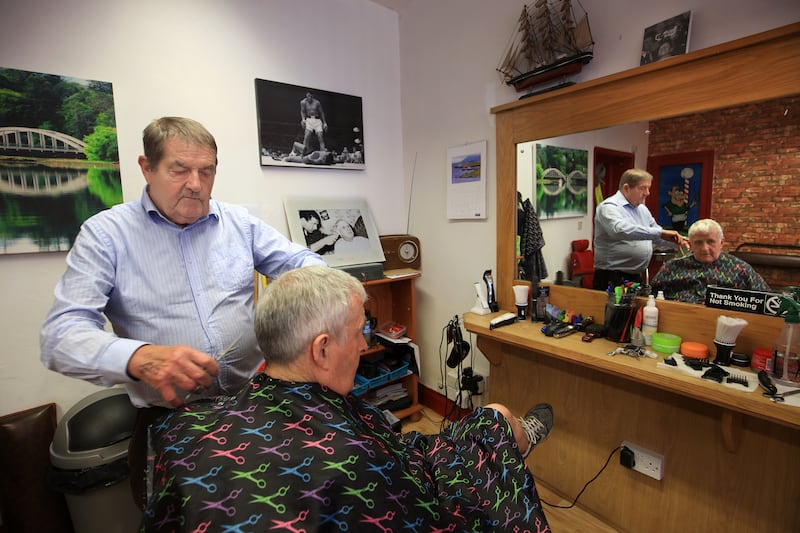
He recalls Fair Days once a month, when the streets turned into a marketplace and cattle were herded through them. In September and October, sheep were sold. “We always had Fair Days off school.”
Kenmare was much quieter then. We used to play football on the street because there were hardly any cars passing. There wasn’t much money around, and very little tourism
Hanley was a passenger on the last train out of Kenmare on February 1st, 1960, at 9.30am. The railway had opened in 1893, and the Kenmare branch line was the last stop on the Great Southern and Western Railway route. It went to Headford Junction, where people changed for an onward train. “It was a steam train,” he recalls.
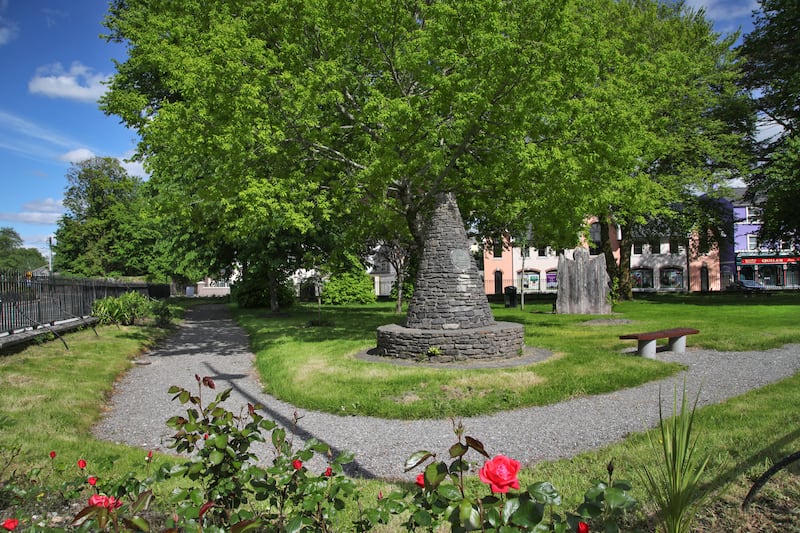
The train had been a link in the travel chain of emigration to the US. “People came in from Sneem and roundabouts and stayed in Kenmare overnight and they went on that train, then to Cork, and stayed there another night before they got the boat to America.” When the trains stopped running, the sound of the whistle vanished from the town.
[ 36 hours in Clifden: ‘Golfgate certainly raised awareness of the town’Opens in new window ]
5pm
Crowleys Bar on Henry Street doesn’t officially open until 5.30pm, but Peter Crowley lets me in so we can talk uninterrupted before the customers start arriving. It’s a small and very simply decorated old-fashioned bar of the kind that used to be common in Ireland and is now becoming rarer and rarer. Its charm is in the fact it remains authentic and unchanged. You could never create this kind of bar in 2022: it has the patina of age, and its collective memories; the kind of bar you return to over time and feel relief it is still the same, in a world that is changing so fast.
“I grew up over the bar,” Crowley says. “Kenmare was much quieter then. We used to play football on the street because there were hardly any cars passing. There wasn’t much money around, and very little tourism.”
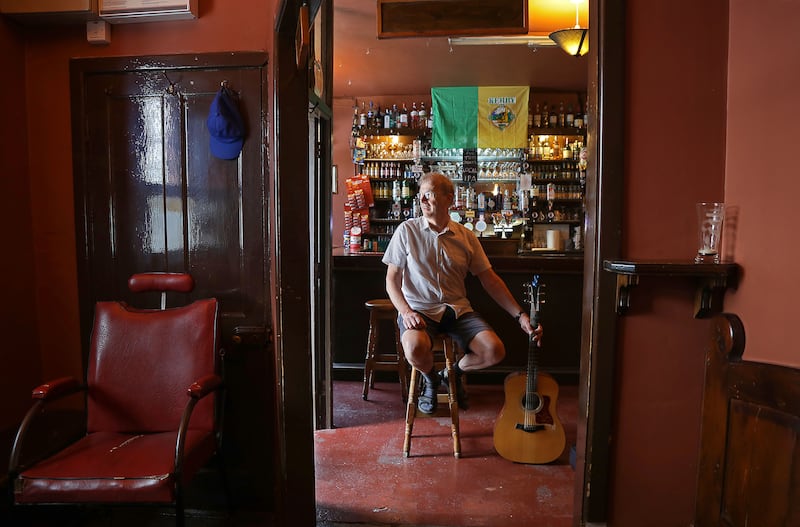
I tell him Peter Hanley remembered there being 32 pubs in the town when he was a boy. “There are four actual pubs now, if you don’t count the ones that do food,” he says, counting.
I’ll keep my memories of this beautiful and special stone circle of old; when I went there first; when there was no gate, no fence, and no concealed CCTV cameras
It’s €4.70 for a pint of Guinness here. The popular pub is known for music, which tourists love, but don’t expect any if you turn up at a weekend. “At the moment, I purposely don’t have music at the weekend, so locals can have a chat.”
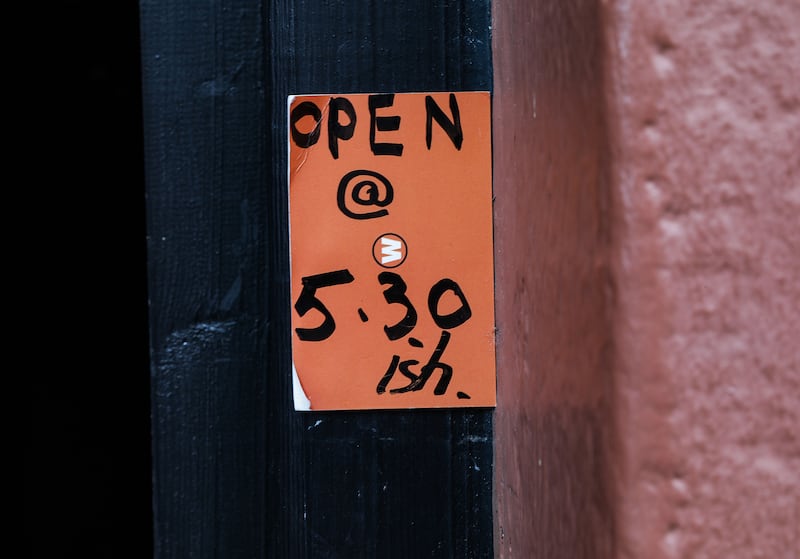
Hanley muses on the difference, as he sees it, between Kenmare and the tourism behemoth of Killarney. “I’d describe it as the opposite of Killarney. People are still very friendly here. It is all business in Killarney.”
5.30pm
Maison Gourmet, more or less across the road from Crowleys, looks as if it came straight from Paris. There are the traditional bistro chairs and tables, and a classic French cafe menu, with fabulous smells of coffee and pastries wafting outwards.
I’ve put my head in the door a couple of times already during the day, but every time, it’s been so packed with customers that I haven’t wanted to disturb the owners. French couple Emma and Patrick Puech left France in 2013, where they had run a bakery since 1996. They went first to Galway and then moved to Kenmare.
“I am someone who is all about the feeling,” Emma says, sitting at one of the tables they imported from France. They came to Kenmare to visit their son Mael, who was working as a sommelier at the Park Hotel and were instantly drawn to the place. “There are 36 nationalities living in Kenmare,” she says.
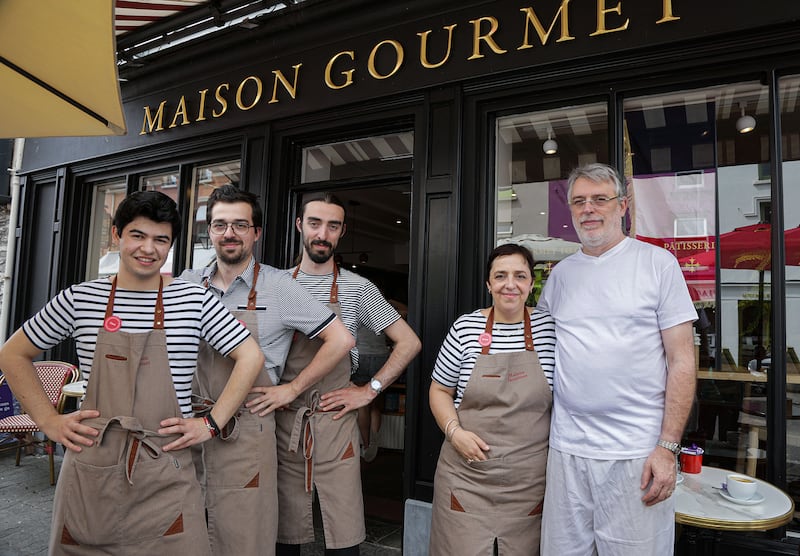
They import butter from France to make their croissants. “If you want to get something puffy, you need a dry butter.” Everything on their menu is home-made. Patrick is the baker and pastry chef. “You can travel to France while in Ireland.”
Until now Maison Gourmet has only opened in the daytime, but sometime in August they plan to open as a wine bar in the evening. Son Mael will work as sommelier, and chef Jade Caulier will do the food, which Emma says will be “fine dining, but casual, with local ingredients”.
[ 36 hours in Carrick-on-Shannon: A tourist town with no one aroundOpens in new window ]
9pm
I go in search of Kenmare’s stone circle near Market Street. I had been there many years before when walking the Kerry Way. I’ve waited until the daytime tourist buzz has died down to go back, hoping I’ll have the place to myself.
The stone circle is still in there somewhere, unseen, but the field is now fenced and gated, and the gate is locked. There are opening hours to the site now, 8.30am to 8.30pm. I stand there for a while, feeling sad that it appears this place now needs to be protected during the night, from whatever the local authorities think it needs to be protected from.
For a few minutes I consider climbing the gate and going in anyway. “Concealed CCTV cameras operate on these premises,” reads a stern sign, with images of two cameras to emphasise the point. I don’t climb the gate. I walk away. I’ll keep my memories of this beautiful and special stone circle of old; when I went there first; when there was no gate, no fence, and no concealed CCTV cameras.










